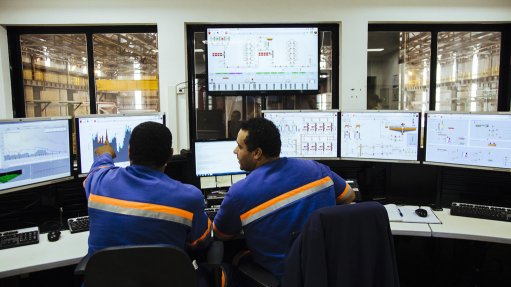
STEADY PROGRESS The mining industry’s efforts are still evolving, but many are far enough along to provide some insights into how mines can make convergence work
Many mining companies are currently focused on the convergence of traditional information technology (IT) and automation-focused operational technology (OT); historically, these two areas have operated separately, says professional services company Accenture mining group research lead Segran Pillay.
He says that the industry’s efforts are still evolving, but many are far enough along to provide some insights into how companies can make convergence work. “It is clear that bringing the two areas together under one governance framework is a key to success.”
However, Pillay points out that doing so can be difficult, largely because of the way that OT has traditionally operated. He says that, historically, OT’s focus has been on keeping production going, rather than implementing rigorous management processes and policies, which is at the core of the IT group’s work.
Therefore, Pillay comments, the maturity of the OT group’s governance typically lags behind that of the IT group. For the two to work together, companies need to transform the OT organisation’s processes and bring them into alignment with IT.
“This effort should begin with a clear view of where the organisation is and where it wants to go. This can be captured in an automation master plan, which looks at factors such as current automation and production assets, automation and industrial IT architecture, connectivity issues, operational procedures and documentation,” he states.
Pillay remarks that, by using these insights, mining companies can create a convergence plan that spells out how OT will operate in the future, which will ensure the maturity level is improved so that it can work effectively with IT.
Some of the key actions involved in this transformation include mapping all processes, defining the operating model, identifying key organisational interfaces, identifying key organisational interfaces and incorporating the human factor.
“People are clearly the most important factor in IT-OT convergence. Here, companies need to focus on people-related gaps in two areas.” The first is the convergence of IT and OT to drive a need for new processes and roles. For example, convergence means merging IT and OT architectures with the full vertical integration of technology, from the enterprise resource planning to the sensor level.
Pillay highlights that this makes the company’s industrial control systems more vulnerable to cyberattacks that can potentially come through central IT all the way down to supervisory control and data acquisition, a programmable logic controller, a distributed control system or some other automation system.
Therefore, he points out that the company will need new cybersecurity processes and, most likely, a cybersecurity specialist on the automation team. As convergence continues, companies need to be on the lookout for such new requirements.
Pillay says the second gap to watch for is the need for different skills in the new environment. With the convergence of IT and OT, and digital transformation, in general, traditional instrumentation specialists and operations personnel will probably need to be redeployed.
“Typically, the new technologies brought in to monitor equipment and model the process will be unfamiliar to them.” Therefore, companies will also need to consider training people on new technologies and standards, for things such as alarm management, wireless systems, statistical multivariate monitoring, similarity-based models and other advanced topics.
He notes that many of these are traditionally part of graduate engineering courses in academia, but they will also need to be included in a company’s IT-OT training curriculum in future.
Additionally, Pillay states, change management is always an important part of a transformation effort, and projects to bring together IT and OT are no exception. He says that, without change management, the convergence initiative is likely to yield disappointing results.
“For example, consider the difficulty of introducing smart instrumentation in mining. Such instrumentation is already standard in the chemicals and oil and gas industries, but bringing it into mining has been a big challenge,” Pillay points out.